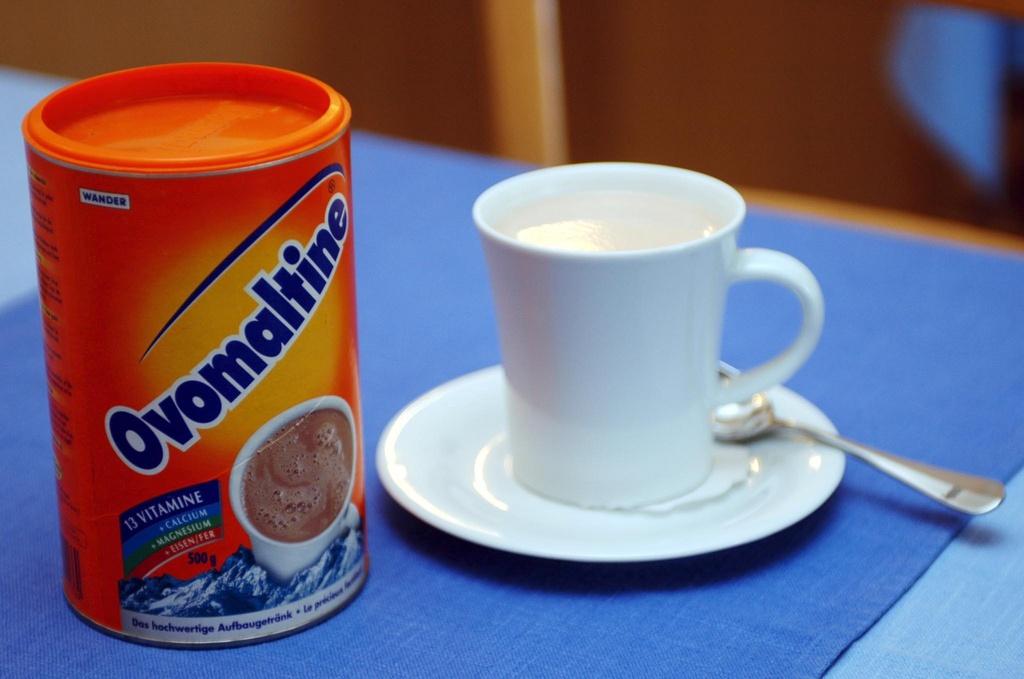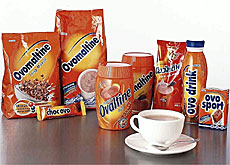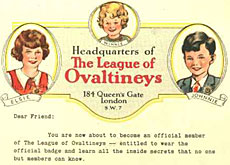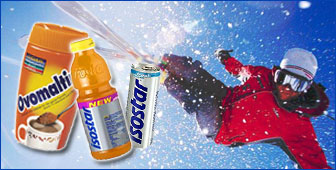Ovomaltine: still going strong at 100

Ovomaltine – the Swiss malt-based beverage which turns 100 this year – is consumed all over the world, and its popularity shows no sign of diminishing.
In Switzerland, generations have grown up with the drink that enjoys a wholesome, dynamic image.
Made from a formula devised by Dr Albert Wander in 1904, Ovomaltine is marketed in almost 100 countries from Zimbabwe to Qatar and Russia to Ecuador. In some parts of the world it goes under the name Ovaltine.
Although it has been established in Europe for the best part of a century, the milky beverage made from a sweetish malt-based powder is just starting to take off in Asia.
In China, where the former Sandoz group – one-time owners of Wander – opened a factory in 1995, Ovaltine (or A Hua Tin) is rivalling the traditional green tea.
In Thailand, it is even more popular and sales are continuing to grow.
“In the minds of Thai people, Ovaltine is associated with a healthy lifestyle and a balanced diet, just as Dr Wander intended,” explained Thomas Städeli of the Zurich office of the Advico, Young and Rubicam advertising agency, which has carried out a market study of the product.
British favourite
In Europe, the biggest market is Britain. The British have a long tradition of drinking “Ovaltine”, going back to 1906. They and the Italians were the first to acquire the habit after the Swiss.
In 1913, the first Ovomaltine factory outside Switzerland was built at King’s Langley in Hertfordshire.
Italy, meanwhile, continues to be “an important market”, according to Wander spokesman Alfredo Schilirò, although Italy imports only a third of the quantity of Ovomaltine drunk by the British.
The enduring success of Ovomaltine is due to its composition, depending on just a few nourishing ingredients: barley-malt extract, milk and egg.
Over the years, a small amount of cocoa has been added but otherwise Ovomaltine still consists exclusively of unrefined raw materials.
“It is a complete beverage,” explained Professor Renato Amadò, of the Institute of Food Science in Zurich, “rich in proteins, vitamins and carbohydrates.”
A Swiss tradition
In Switzerland, Ovomaltine is the stuff of legend, a brand that has always been closely associated with the national image.
“You will find it in every household, and for years it has been advertised on television,” said Thomas Städeli, “generations have grown up with Ovaltine.”
It has also been a great financial success. The Wander company has remained faithful to the ideas of its inventor, but has also shown a willingness to adapt to satisfy changing habits.
From powder in a tin to be mixed with milk at breakfast time, we have moved on to individual Ovomaltine sachets and Ovomaltine bars, ideal for travelling or when taking part in sport.
Sports connection
There is, in fact, a close link between Swiss sport and Ovomaltine: the product was the first to be made available during a sporting competition, in 1927.
Wander practically invented the sponsoring of sporting events. “In 1967, Wander was the first Swiss company to sponsor a television commercial,” said Schilirò.
In its advertising, Ovomaltine has always projected an image of health, vitality and physical strength.
In the mid-19th century, one Swiss child in five died from malnutrition in the first 12 months of life.
It was this that prompted pharmacist Georg Wander to look for a solution.
Food supplement
His brilliant idea was to mix egg with malt, a natural product that had been used as a remedy for over 2,000 years.
It was Wander’s belief that “by transforming raw materials, already complete in themselves, into a single product, one can obtain all the elements a person needs to recover from illness or physical breakdown”.
In 1865, Wander set up his own laboratory in Bern. There he produced a malt extract which for decades was to provide a vital food supplement for children and sick people.
When he died, his son Albert, a pharmacist and chemist, worked to improve the product, adding other natural energizing ingredients to the malt extract.
In 1904, Ovomaltine was born.
Bern to Britain
In recent decades, Ovomaltine’s parent company has changed hands a number of times.
In 1967, Wander was taken over by Sandoz. Then, when Sandoz merged with Ciba in 1996, Wander came under the ownership of Novartis.
In 2002, the Bern-based company was acquired by the Associated British Food group.
Production for the European market continues to be based in Switzerland, at the Neuenegg plant in canton Bern.
The new British owners have decided to invest more heavily in the Swiss factory, raising the number of employees to over 300 and giving Neuenegg strategic importance as a research centre.
swissinfo, Elena Altenburger
For 100 years, Ovomaltine has been enjoyed and marketed all over the world.
A century ago, many people in Switzerland suffered from vitamin deficiencies. Ovomaltine was soon adopted as a nourishing pick-me-up. Its composition has not changed since then.
It takes 12,000 grains of barley to produce the malt extract contained in a 500-gram tin of Ovomaltine. Barley is a source of health-giving food products such as maltose, a natural energizer.
Since 2002, the brand has been owned by the Associated British Food group. Ovomaltine for the European market is produced at Neuenegg in canton Bern.

In compliance with the JTI standards
More: SWI swissinfo.ch certified by the Journalism Trust Initiative



You can find an overview of ongoing debates with our journalists here . Please join us!
If you want to start a conversation about a topic raised in this article or want to report factual errors, email us at english@swissinfo.ch.